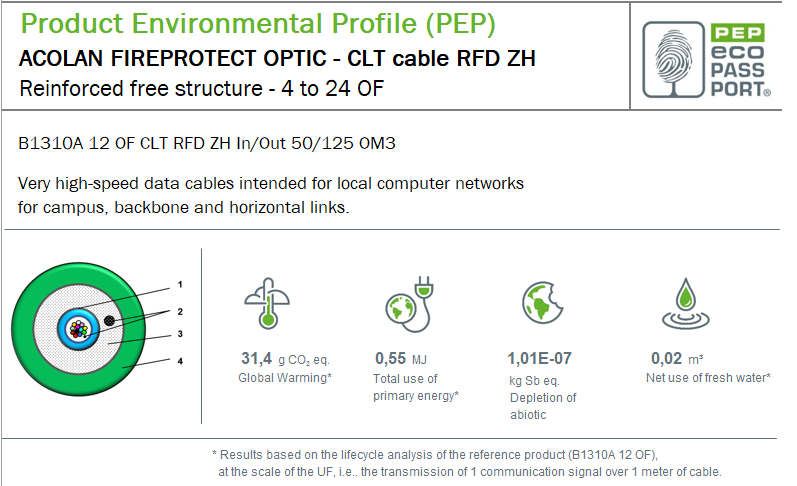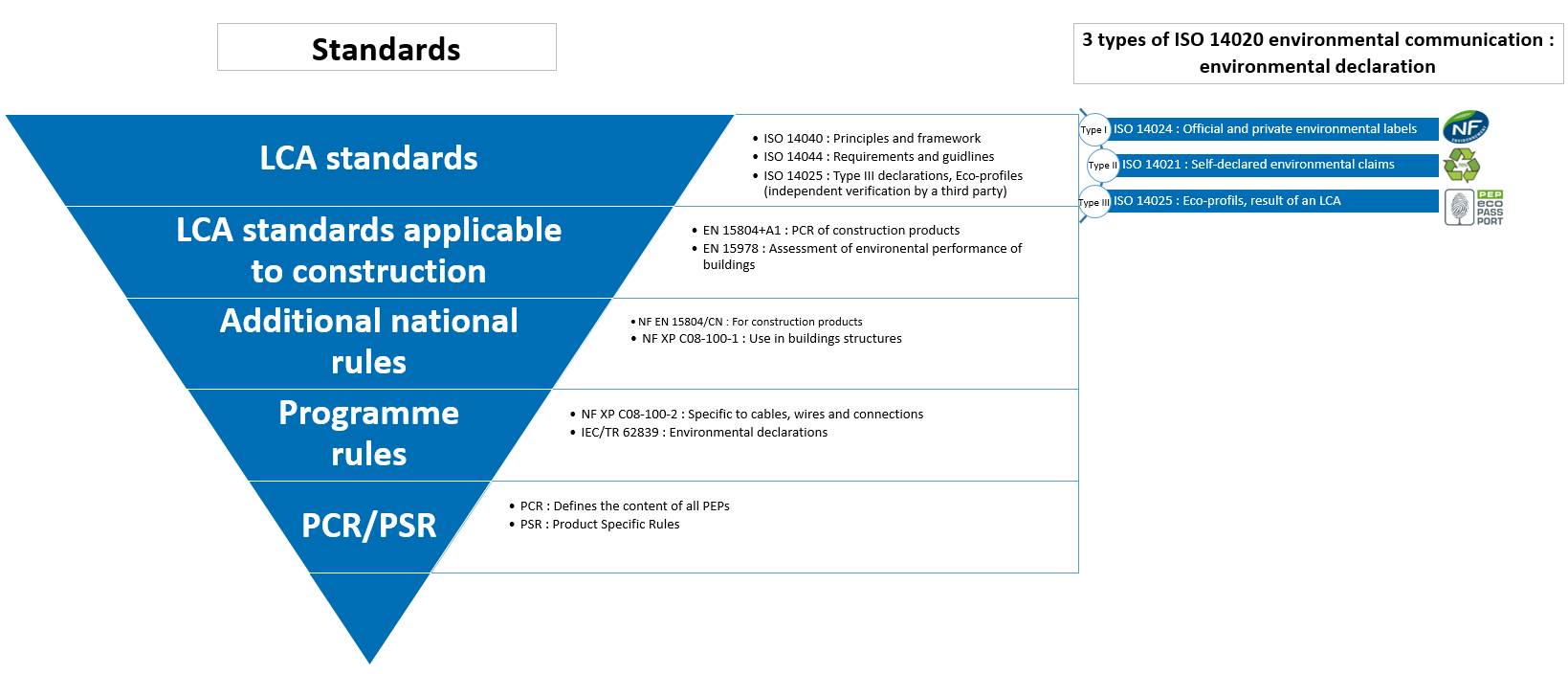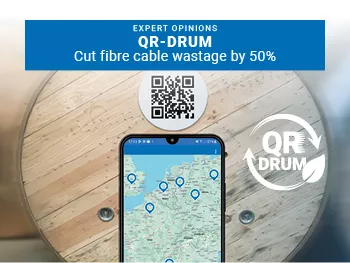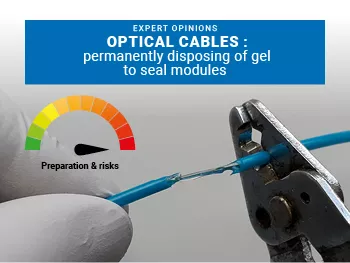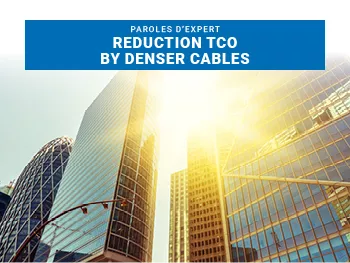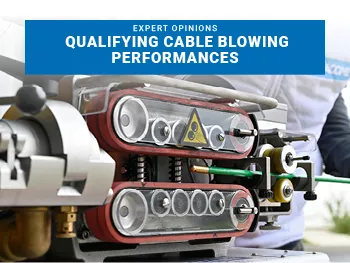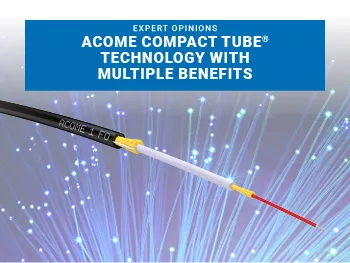Supporting our customers' low carbon strategy : PEP ecopassport®
To contribute to its customers’ low carbon strategy, ACOME has introduced a series of three structured publications. This series provides food for thought and tools in relation to the following areas: calculation, reduction and offsetting, in order to limit the carbon emissions from products. The first step is to calculate the emissions from our products by using Product Environmental Profile (PEP) records, working with the PEP ecopassport® association.
At its level, through its energy and environmental policy, ACOME is contributing to the low carbon strategy set out in the Statement of Non-Financial Performance. You can see the cooperative’s actions and commitments in the magazine ACOME INSIDE : Carbon transition.
What is a Product Environmental Profile (PEP) ?
A PEP registered under the PEP ecopassport® programme is a Type III environmental declaration as per standard ISO 14025. It creates an environmental passport for a product, and it has a 5-year validity period. It specifically refers to electric, electronic and HVAC systems, and requires that a multi-criteria Life Cycle Assessment (ACV) is carried out, taking all the stages of the product life cycle into account, as set out below :
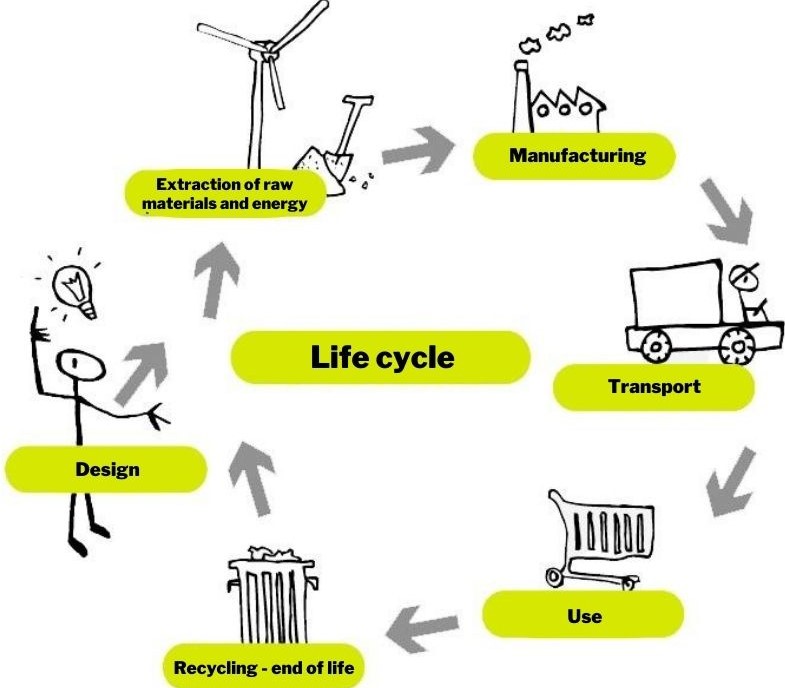
Source : Pôle éco-conception
The PEP record is a fundamental component for calculating the environmental performance of a building or system. In France, the RE 2020 environmental regulations establish a maximum carbon footprint per m2 for new buildings. PEPs are a way of obtaining the information needed to calculate this.
What does a PEP contain ?
-
A front page with a simplified PEP, the identity of the issuer, the standards used, the date of issue and the certified validator,
-
A description of the equipment, with the product’s functional unit and lifespan,
-
The product’s materials and total mass,
-
Environmental impacts tables based on 39 indicators,
-
The assumptions taken into account in the various stages of the LCA.
The PEP may cover a homogeneous product family using the rules of extrapolation, but it is recommended to limit this in order to retain a certain level of precision regarding the impacts.
Environmental impacts are calculated using the EIME software, which is an LCA and eco-design tool developed by Bureau Veritas. Finally, all rules are verified by a certified third party, thus ensuring the compliance and neutrality of the data shared on the PEP ecopassport® website.
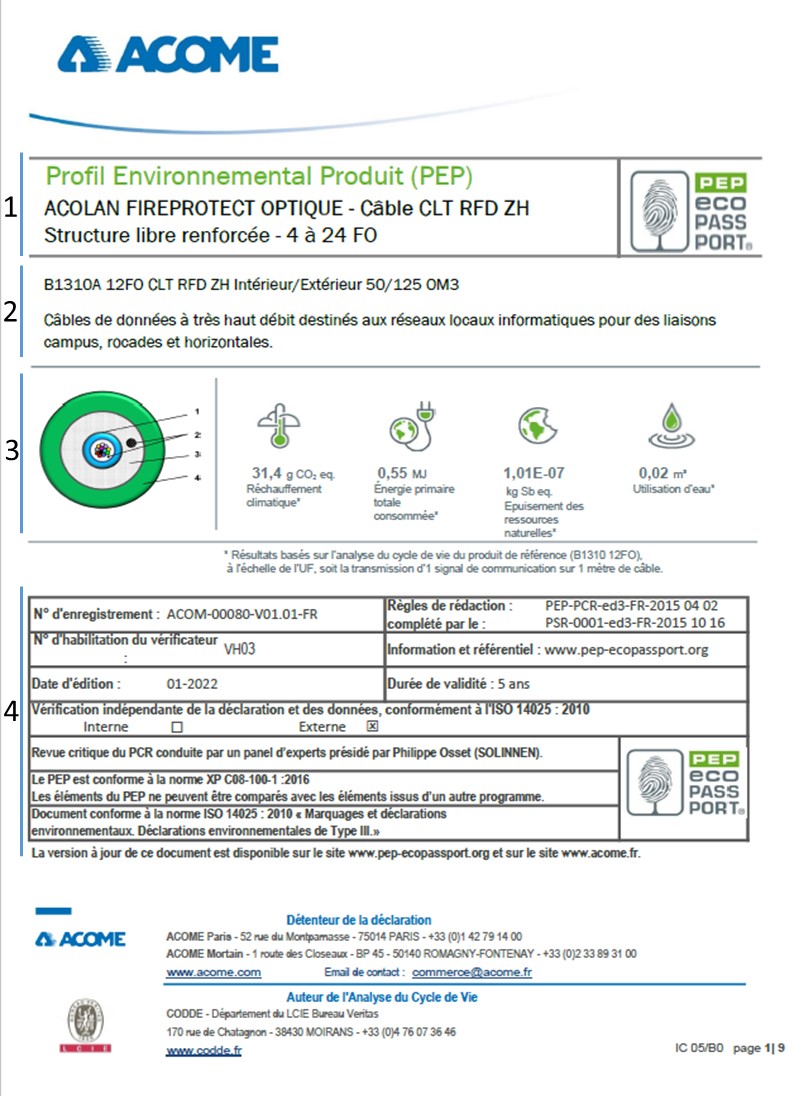
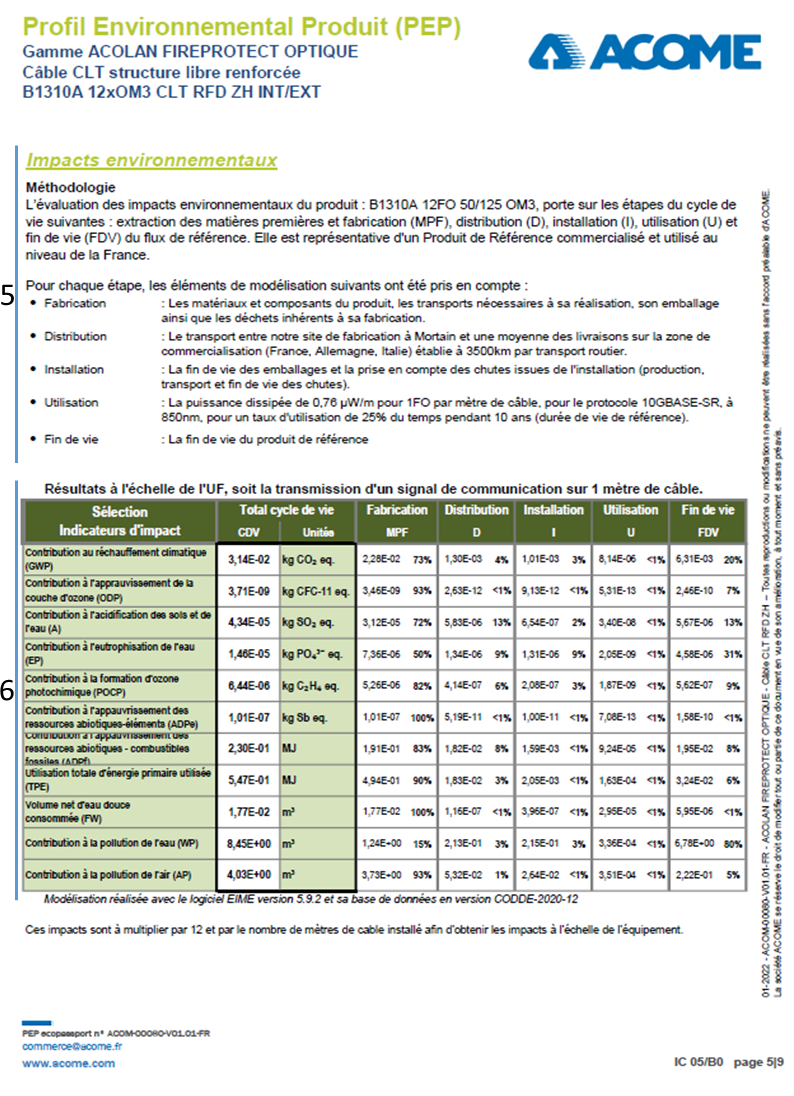
- Document name + product range
- Reference product
- Simplified display
- PEP general information
- Environnemental impacts - life cycle stages considered in the assessment
- Environnemental impacts tables
Product Environmental Profile Record for the FTTH cable
Focus on 3 essential environmental indicators for a product :
To assess the impact of our products, there are 39 environmental indicators under standard EN 15804+A2. Using the simplified PEP display, we present three of the 39 indicators, chosen in line with current priorities.
- Contribution to global warming
This graph compares the greenhouse effect of other greenhouse gases with that of CO2. Carbon dioxide is the most common greenhouse gas in the atmosphere, but it is not the only one. The global warming potential is calculated in CO2 equivalent. (CO2 eq).
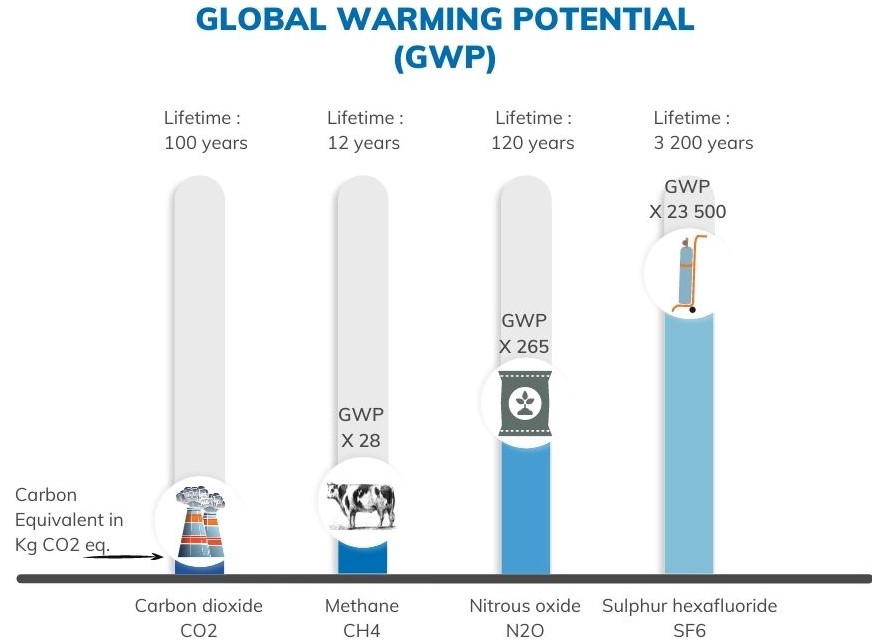
The lifetime : number of years present in the atmosphere.
The global warming potential (GWP) : impact on global warming compared with CO2.
For example, methane (CH4) has a global warming potential 30 times greater than CO2, but its lifetime is 12 years compared to 100 years for CO2.
- Contribution to depletion of natural resources
The depletion of natural resources refers to the extraction of minerals and fossil fuels, taking into account available reserves and current consumption. This indicator is expressed in kg antimony equivalent (kg Sb eq).
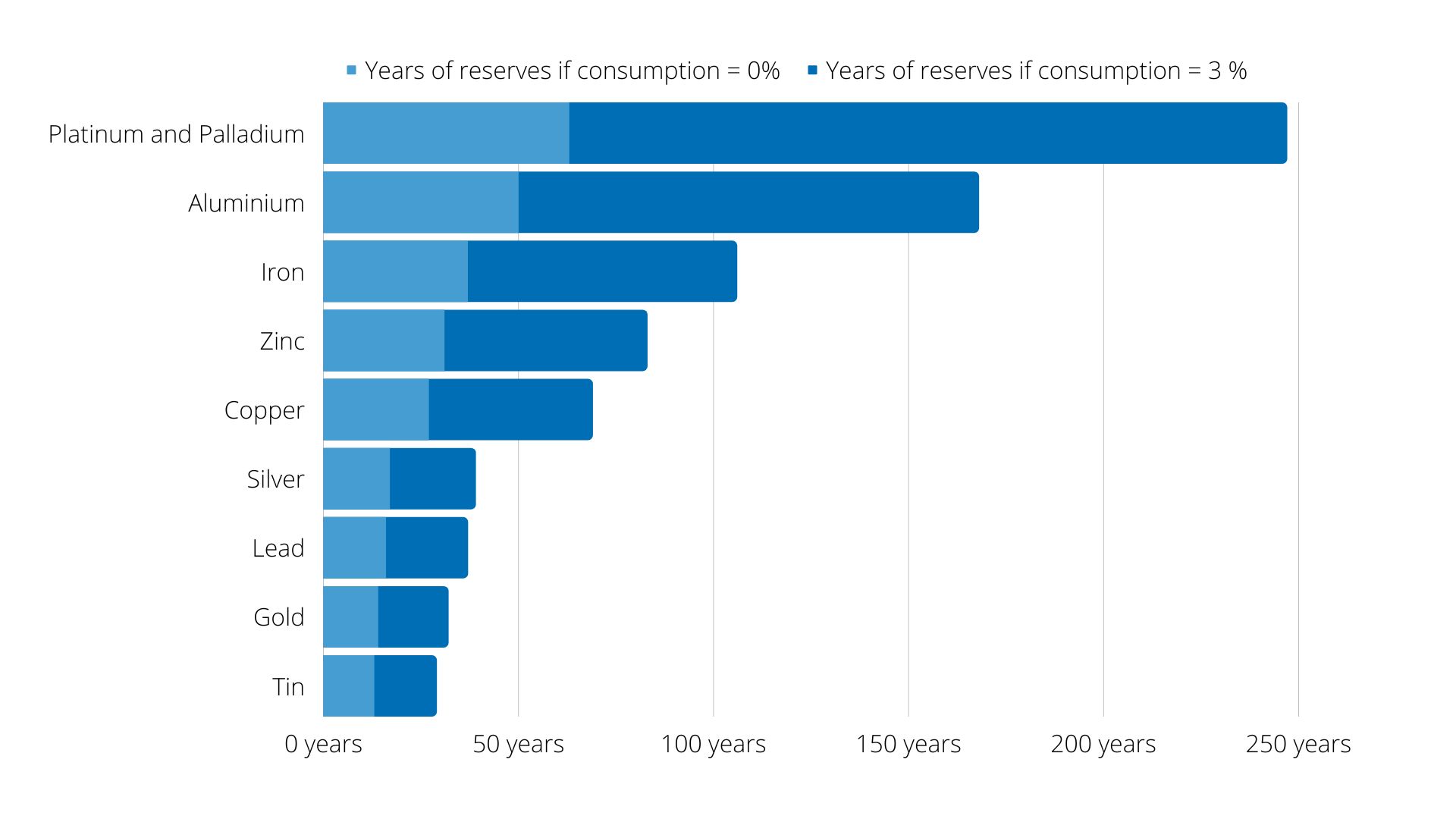
Source : USGS report
This graph shows the number of years left in natural resource reserves, considering two consumption growth scenarios: 0% and 3%.
- Total primary energy consumption
Energy consumption represents the quantity of non-renewable energy used for a product’s life cycle. It is expressed in megajoules (MJ).
Simplified PEP display.
To make it easier to read the most influential indicators in the PEP, the simplified display was introduced in 2018. Select data are extracted from the PEP to demonstrate the key environmental impacts.
The simplified display is subject to a style guide, with a number of potential layouts. The following information is required and mandatory :
Left-hand side : diagram of the cable with key
Right-hand side : presentation of the 4 environmental indicators.
Source : PEP ACOLAN CLT RFD ZH Record
The indicator entitled “contribution to global warming” is mandatory and is expressed in CO2 eq.
PEP ecopassport®, the reference programme for declaring PEPs
PEP ecopassport® is both an association and an international programme for Type III environmental declarations (i.e. verified by a third party), led by the P.E.P. association, which was co-created by industry professionals in 2009. The objective is to establish a common reference framework for calculating and then reporting the environmental footprint of a product in a rigorous and transparent manner.
ACOME was a founding member of the PEP ecopassport® association when it launched in 2009. It now includes 8 large trade unions and 30 international-scale companies in the electrical industry. PEP ecopassport® works closely with the European Commission’s PEF (Product Environmental Footprint) and is currently the only permanent member of the Environmental Footprint (EF) subgroup. The products in question are electrical, electronic and HVAC systems within infrastructure.
To provide certified data, a programmes operator has drawn up a set of calculation rules and methodologies. PEP ecopassport® has built on the ISO 14040 and NF EN 15804+A2 standards to establish a common and rigorous framework.
This standard framework was supplemented with the drafting of the PCR (Product Category Rules), which includes rules relating to the generic calculations for a family of products, and the drafting of the PSR (Product Specific Rules), which defines the sub-rules for specific calculations for equipment.
Working to standardise European environmental profiles
Many of the industrial professionals who are members of PEP ecopassport® work on an international scale. PEPs are also widely used across Europe.
PEP ecopassport® is working on standardisation with the various environmental programme operators, such as BRE in the UK or IBU in Germany, within a European association, ECO Platform, which brings them together. ECO Platform aims to provide a single gateway to access data from the 57 member environmental programmes.
These operators are classified according to the number of PEPs provided, from E to A. PEP ecopassport® is classified in Category A : “Very Large” for programme operators with over 1700 environmental product declarations (EPD) according to this ECO Platform classification.
To achieve its goal of standardisation, PEP ecopassport® studies applications for mutual recognition from interested national programme operators on a case-by-case basis. Here are the partnership agreements undergoing standardisation.
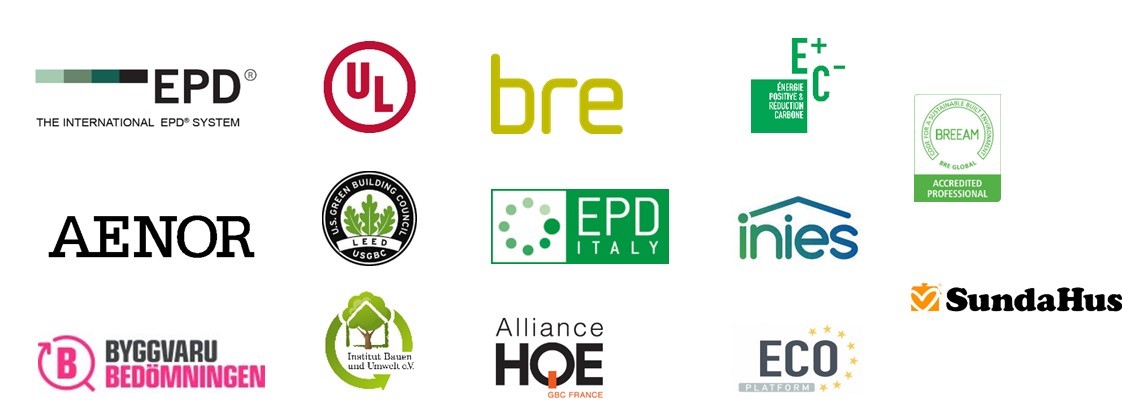
Source : PEP ecopassport® Association documentation
Conclusion
PEP ecopassport® provides a common and rigorous framework of reference in accordance with the standards and regulations of ISO 14025 & ISO 14040s. This framework qualifies the environmental performance of products in an objective and reliable manner, and explains the choice of customers and buyers in a fair and reasoned way.
ACOME is committed to an environmentally-friendly approach by assessing the environmental impacts of its products using PEP records. It will then reduce their impacts through eco-design and innovation. Finally, ACOME performs partial carbon sequestration for any remaining emissions through its association with Normandie Forêver. Find out more about this in our upcoming publications in the Calculation, Reduction and Offsetting series.
